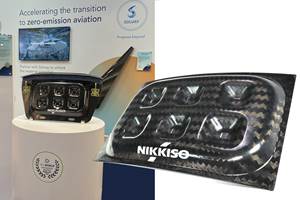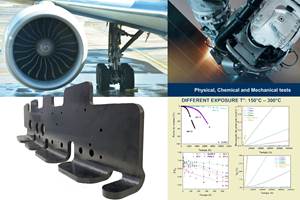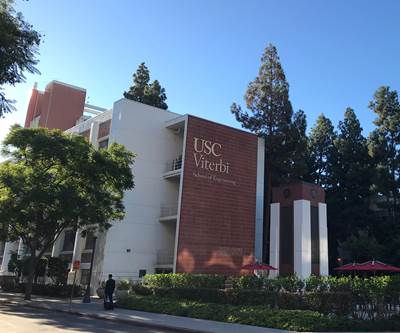California high school adds composites fabrication to curriculum
A STEM academy recently opened the doors to a brand-new composites fabrication lab, to prepare students for the local aerospace workforce after graduation.
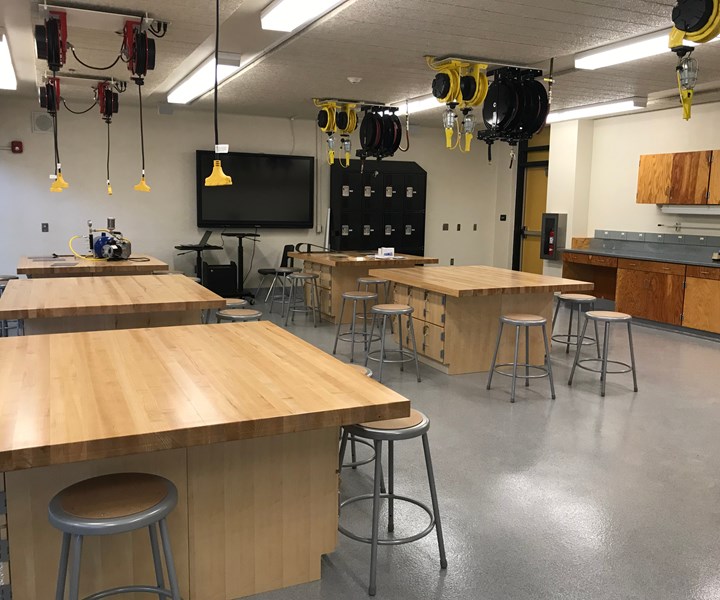
The new composites lab, which began as a makerspace, opened this August at a high school in California. Source, all images | Knight High School Engineering and Digital Design Academy
At the beginning of this school year, Knight High School Engineering and Digital Design Academy in Palmdale, Calif., U.S., held a ribbon-cutting ceremony for a new composites fabrication lab designed to provide learning opportunities geared toward giving students a head-start on local aerospace jobs.
From makerspace to composites fabrication
The lab started out as a makerspace. According to James Stockdale, Academy coordinator, it was about seven years ago that the school administrators at Knight High, which is a nationally-recognized STEM school with 275 students, decided that they needed a way to provide students more hands-on instruction.
“We attended the Bay Area MakerFaire and were inspired to create our own makerspace,” Stockdale says. They filled the makerspace with saws, drills and other traditonal tools, Stockdale says, but also CNC lasers, routers and 3D printers.
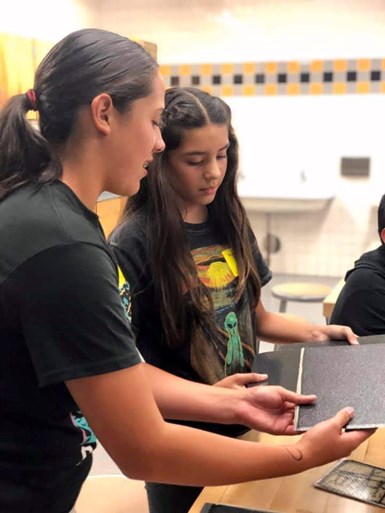
High school students learn about different types of composite materials.
“This space became a favorite amongst students for building ideas, but also one that local industry mentors came out to spend time with our kids in creating things,” Stockdale adds. Those mentors included Northrop Grumman (Falls Church, Va., U.S.), Lockheed Martin (Bethesda, Md., U.S.) and NASA, as well as Scaled Composites (Mojave, Calif., U.S.) and The Spaceship Co. (Mojave). School administrators began to notice that a lot of the students who used the makerspace began pursuing careers at these companies after high school.
The high school connected with Joel Morgan, who works at Goodwill Workforce and had previously developed an airframe fabrication certificate program, which included education in composites fabrication, to connect graduates from local Antelope Valley College with Northrop Grumman.
“[Morgan] started meeting with our kids regularly to enroll them in this program after graduation, and a couple of our teachers audited the composites class themselves,” Stockdale says. “The fostering of these relationships led to the conversation that it would be in the best interest of our students, industry and the community as a whole if we could start the students earlier on composite training in the high school.”
The former auto shop, which was located next-door to the existing makerspace, was selected to be remodeled into what is now the composites lab.
According to the Antelope Valley Union High School District, the new lab was constructed with funding from the California Department of Education’s Career Technical Education Grant. The California Career Technical Education Incentive Grant (CTEIG) is a state education, economic and workforce development initiative that works to provide students in kindergarten through 12th grade with the knowledge and skills necessary to transition to employment and postsecondary education.

Knight High teacher Briana Gallegos (left) will teach students how to create composite parts like carbon fiber clipboards, fiberglass logos and Kevlar panels with core material.
Building the curriculum
To educate themselves and to prepare the curriculum for the lab, Stockdale and Knight High science teacher Briana Gallegos attended training at Abaris Training (Reno, Nev., U.S.).
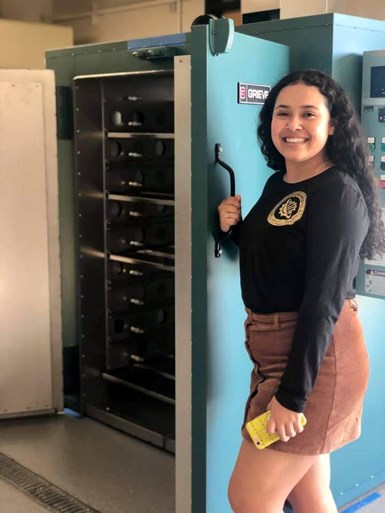
Program partners include Antelope Valley College and Northrop Grumman, along with mentors from Lockheed Martin, Scaled Composites and others.
“During that training, we created a small airfoil using molds and multiple bonding techniques,” Stockdale says. “We modified from this idea to create molds of our own and developed a curriculum for our new lab that has kids starting off simply with carbon fiber clip boards, fiberglass logos, and Kevlar panels with core material, and work our way up to using molds to create small airfoil pieces.”
The curriculum also includes postprocessing and waterjet cutting, and students can enroll in a more advanced afterschool and weekend class to engage in more complex projects, like skateboards.
According to Stockdale, the program offers students a hands-on opportunity to gain a skill set that is directly transferable to the local workforce. “Our aerospace valley is booming with jobs related to the composite industry,” Stockdale says, “and whether our students go on to become engineers or fabricators on the line of the F-35 fuselage, there are great opportunities for them. I love that the program addresses needs of a wide variety of academic levels of students, and offers things to those who are strong in things other than paper and pen academics as well as those who are strong in that area.”
Related Content
Partners recycle A350 composite production waste into adjustable-length rods for MFFD
Herone, Spiral RTC, Teijin Carbon Europe and Collins Aerospace Almere recycle A350 thermoplastic composite clips/cleats waste into rods for the all-thermoplastic composite Multifunctional Fuselage Demonstrator’s crown.
Read MoreJEC World 2023 highlights: Innovative prepregs, bio-resins, automation, business development
CW’s Jeff Sloan checks in with JEC innovations from Solvay, A&P, Nikkiso, Voith, Hexcel, KraussMaffei, FILL, Web Industries, Sicomin, Bakelite Synthetics, Westlake Epoxy and Reliance Industries.
Read MoreDaher CARAC TP project advances thermoplastic composites certification approach
New tests, analysis enable databases, models, design guidelines and methodologies, combining materials science with production processes to predict and optimize part performance at temperatures above Tg (≈150-180°C) for wing and engine structures.
Read MoreRocket Lab begins installation of large AFP machine for rocket production
The 99-ton AFP machine, custom-designed and built by Electroimpact, is claimed to be the largest of its kind, expecting to save around 150,000 manufacturing hours in the Neutron rocket’s production process.
Read MoreRead Next
Developing next-generation composites talent
The M.C. Gill Composites Center at the University of Southern California has steadily grown to become one of the industry’s educational and R&D stalwarts.
Read MoreDeveloping bonded composite repair for ships, offshore units
Bureau Veritas and industry partners issue guidelines and pave the way for certification via StrengthBond Offshore project.
Read MorePlant tour: Daher Shap’in TechCenter and composites production plant, Saint-Aignan-de-Grandlieu, France
Co-located R&D and production advance OOA thermosets, thermoplastics, welding, recycling and digital technologies for faster processing and certification of lighter, more sustainable composites.
Read More
.jpg;width=70;height=70;mode=crop)















